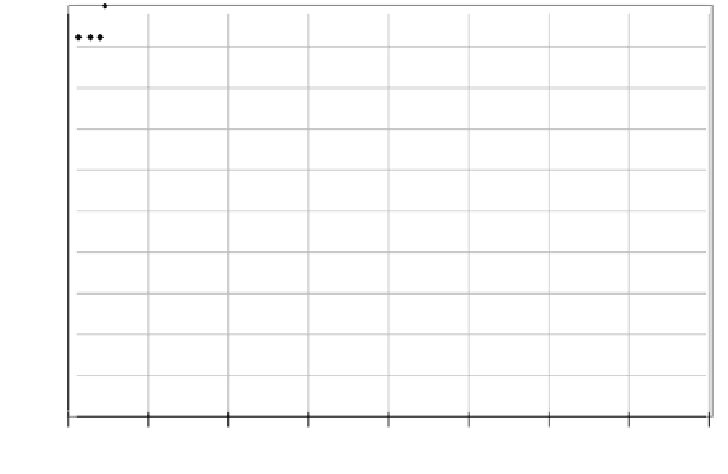Environmental Engineering Reference
In-Depth Information
Source:
Rolls-Royce data
Note:
Since the introduction of jet-powered airliners the improvement in fuel burn has been dramatic.
This chart shows the trends in engine fuel consumption and fuel burn per passenger over a 1000 nautical
miles (nm) mission relative to a specific De-Havilland Comet 4 powered by Rolls-Royce Avon engines.
The markers in the figure represent specific aircraft on a standard 1000nm mission, subject to typical
international reserve rules for fuel, and using three class seating. The vertical scale is normalized to the
correct date. Data for the newest aircraft was unknown at the time. It could be argued that this fuel con-
sumption improvement is much better than other modes of transport, and that the fuel is an important
part of the cost of flying. The emissions of carbon dioxide (CO
2
) and water vapour will be reduced by a
corresponding amount, but note that this will not necessarily help the contrail issue. The emissions levels
of carbon monoxide (CO), hydrocarbons (HCs), nitrogen oxide (NO
x
) and smoke have changed at dif-
ferent rates.
Figure 10.3
Fuel efficiency and specific fuel consumption (SFC)
Emissions
The combustion products from engines consist of unburned hydrocarbons (UHCs),
carbon monoxide (CO), nitrogen oxide (NO
x
), sulphur dioxide (SO
2
), water vapour,
carbon dioxide (CO
2
), soot (particulate emissions) and smoke (combustion emission
particulates that contribute to a visible plume), some of which augment ground-level
smog and local air pollution. CO
2
, water vapour and SO
2
are related directly to the
fuel consumption at the various flight stages; but NO
x
, CO, UHCs and soot are sig-
nificantly influenced by the engine power setting and engine inlet conditions. CO
and UHCs result from incomplete combustion, and are mostly produced at low
power levels. This has been effectively controlled by optimized air/fuel-mixing sys-
tems, and hence emissions at ground level have been substantially reduced to rela-
tively low levels. NO
x
and soot, however, are mainly produced at high power levels.
NO
x
emissions are more difficult to control, as the quantity of NO
x
released is
dependent upon the temperature at which the fuel is combusted, and the time held
at a particular temperature. The higher of either of these two factors, the more NO
x
is formed. Continuous design improvements to the combustor over the last 20 years















































































































